
Parts of the Sun
The Sun is the star at the center of the Solar System. It is a massive, hot ball of plasma, and it is inflated and heated by energy produced by nuclear fusion reactions at its core.. Diagram of the Local Interstellar Cloud, the G-Cloud and surrounding stars. As of 2022, the precise location of the Solar System in the clouds is an open.
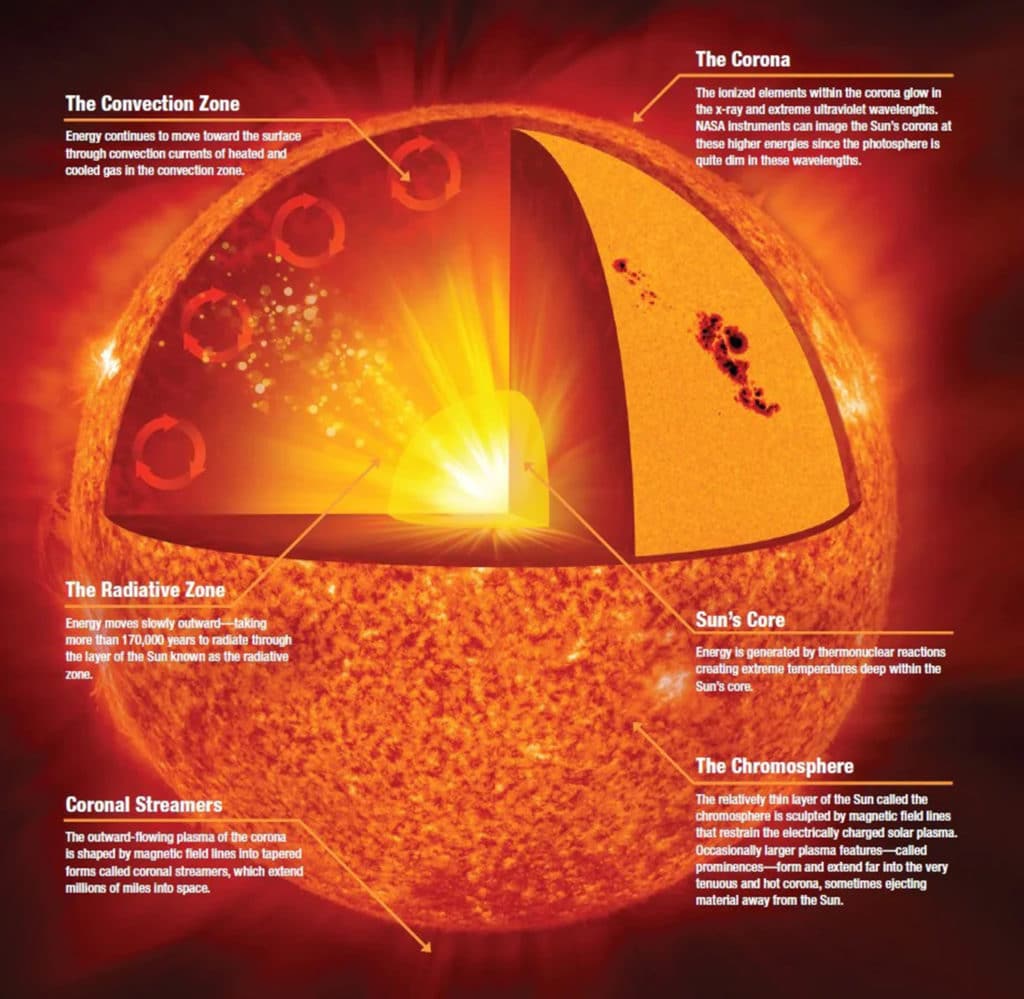
A longstanding mystery about the Sun solved Tech Explorist
Located at the centre of the solar system and influencing the motion of all the other bodies through its gravitational force is the Sun, which in itself contains more than 99 percent of the mass of the system.The planets, in order of their distance outward from the Sun, are Mercury, Venus, Earth, Mars, Jupiter, Saturn, Uranus, and Neptune.Four planets—Jupiter through Neptune—have ring.

Sun Anatomy
The different layers of the Sun The Sun, like other stars, is a huge spherical object made of hydrogen and helium. Its diameter reaches 1.400.000 km, or 109 times the Earth's diameter; but is 4 times less dense than the Earth due to its composition. The Sun is not only made of the glowing gas that we see with a telescope.

Diagrams of the Sun Printable 101 Diagrams
7 Layers of the Sun The sun has 7 layers that are divided roughly in half into two categories. The first four are the outer layers and the last three are the inner layers. We'll go in order from exterior to interior when explaining each layer. Each concentric layer is similar to a gobstopper or an onion.
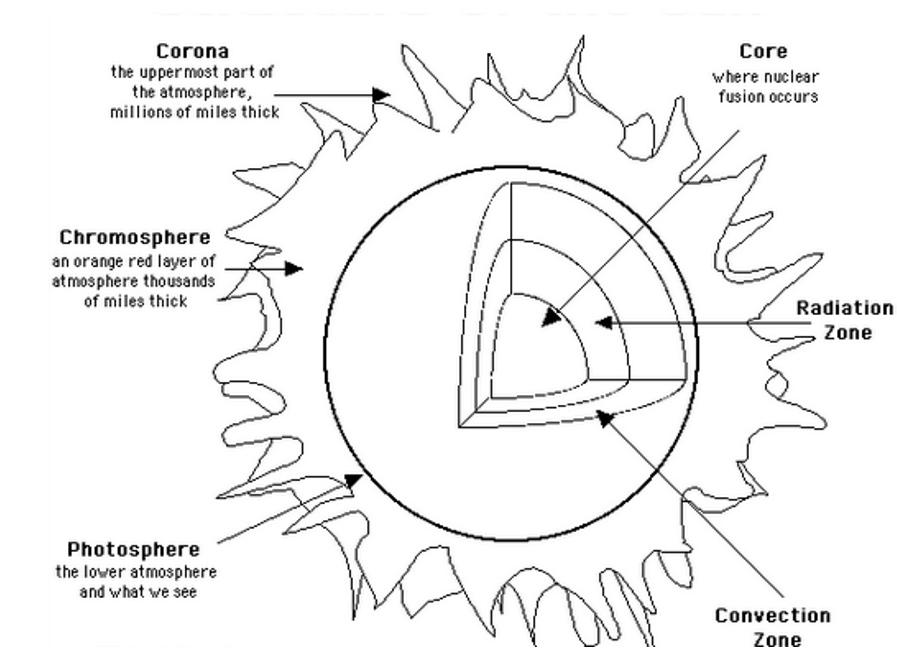
Explain the structure of the sun with a diagram.
The Sun is a glowing, spinning ball of very hot gases, primarily hydrogen (92.1%) and helium (7.9%). Trace amounts of other elements (0.1%), such as oxygen, carbon, nitrogen, silicon, magnesium, neon, iron, and sulfur are also present (NASA). In the extreme heat of the Sun, most of the gas exists as plasma. Plasma is an electrically charged gas.

Fun Sun Facts for Kids
This is the visible 'surface' of the Sun. Almost all radiation from the Sun is emitted from this thin layer of several 100 km thickness, which lies at the upper boundary of the convection zone. It is where the energy generated in the core can finally move freely through space.
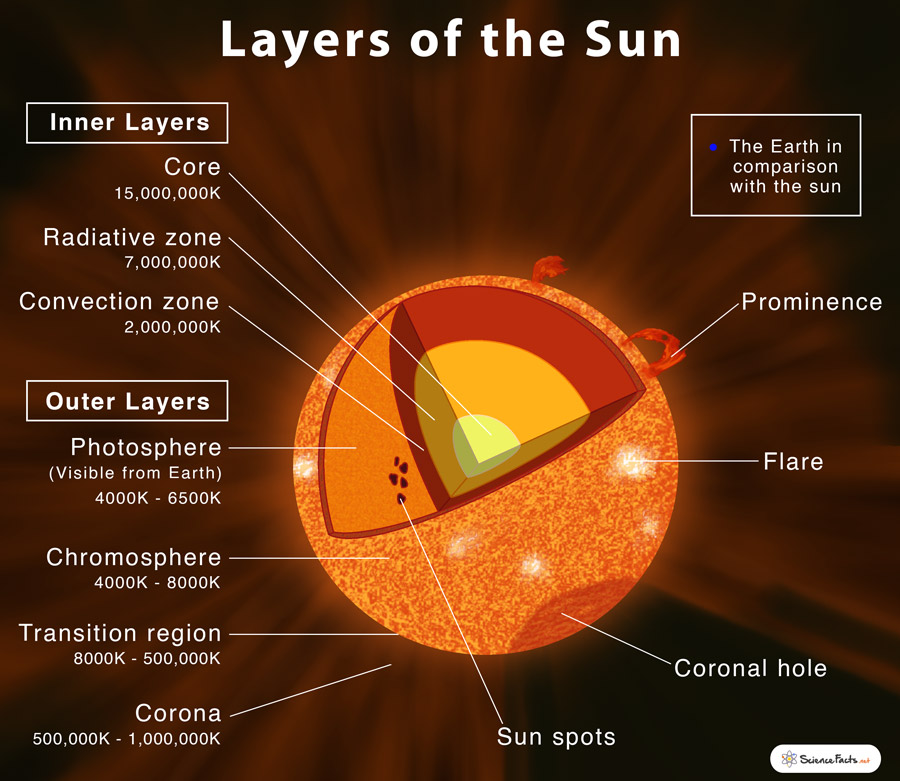
Layers of the Sun Structure & Composition with Diagram
The sun's atmosphere comprises the only layers of the Sun that can be observed directly are the outer layers: the photosphere, chromosphere, and corona. These three layers make up the solar atmosphere. Starting from the Sun's interior core and moving outward, the layers of the Sun are: 1. Solar Core.
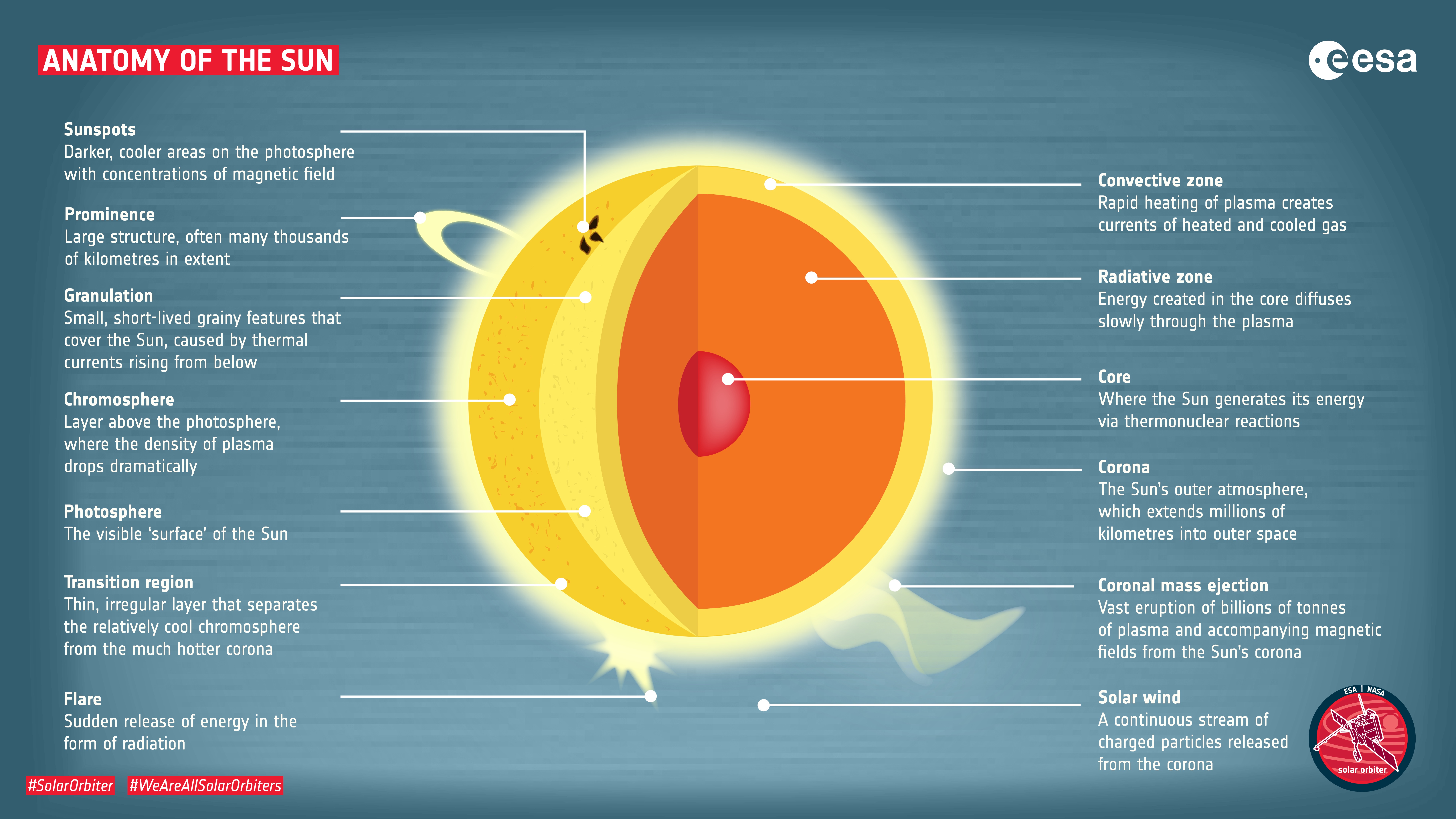
ESA Anatomy of the Sun
SunCalc shows the movement of the sun and sunlight-phase for a certain day at a certain place.. You can change the suns positions for sunrise, selected time and sunset see. The thin yellow-colored curve shows the trajectory of the sun, the yellow deposit shows the variation of the path of the sun throughout the year.

An Explanation for the Missing Sunspots Science Smithsonian Magazine
Layers of the Sun: Diagram The structure of the Sun can be broken down into six layers. Each of the layers has different characteristics.

The Sun The Universe Jessica Barker
The Structure of the Sun Astrophysicists classify the Sun as a star of average size, temperature, and brightness—a typical dwarf star just past middle age. It has a power output of about 1026watts and is expected to continue producing energy at that rate for another 5 billion years.

NASA The Sun
Sun's Structure The sun is made up of six layers: core, radiative zone, convective zone, photosphere, chromosphere, and corona. Core The sun's core, more than a thousand times the size of Earth and more than 10 times denser than lead, is a huge furnace. Temperatures in the core exceed 15.7 million kelvin (also 15.7 million degrees Celsius.
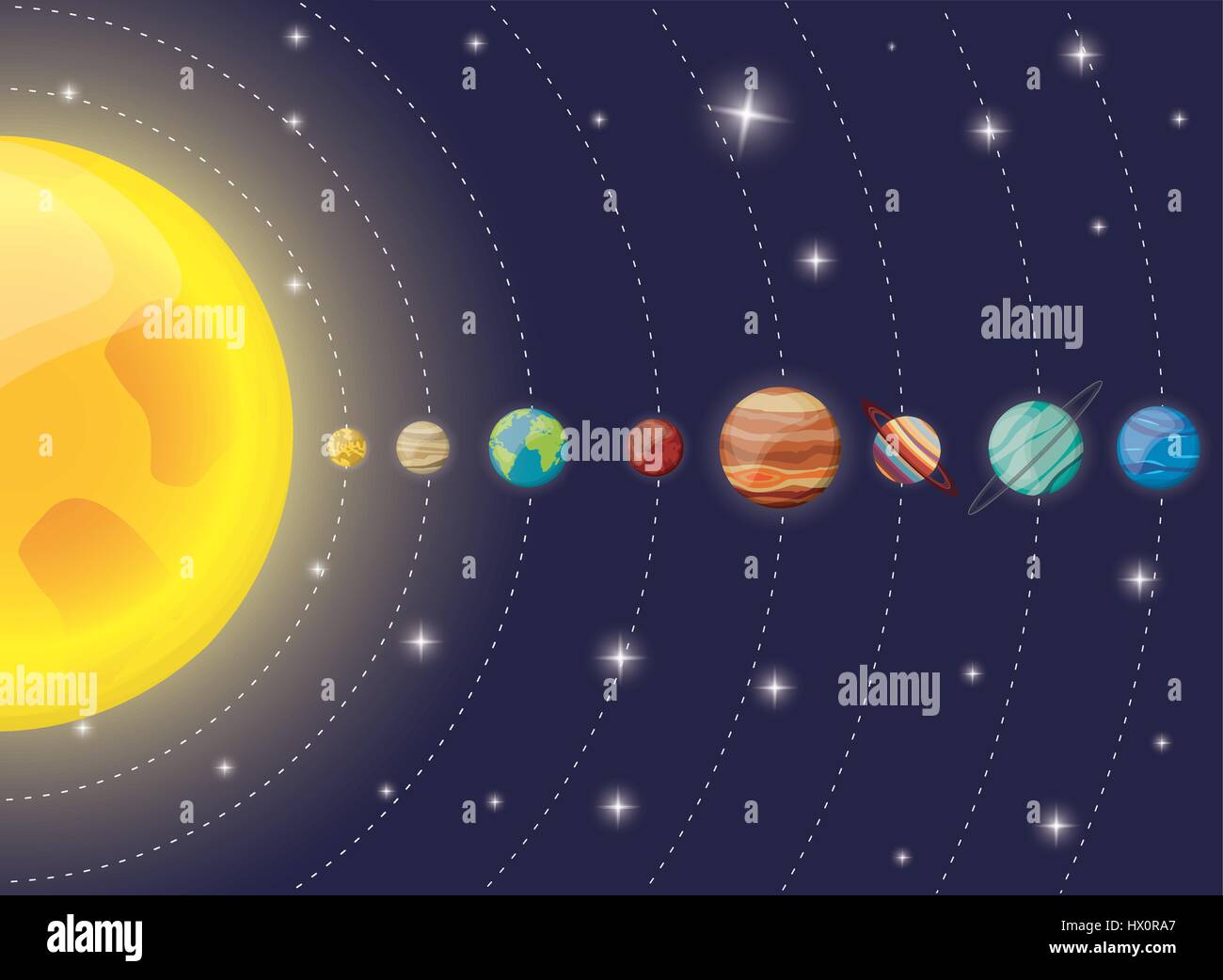
solar system sun diagram Stock Vector Image & Art Alamy
What are the Parts of the Sun? From here on Earth, the Sun like a smooth ball of light. And prior to Galileo's discovery of sunposts, astronomers even thought it was a perfect orb with no.

ESA Anatomy of our Sun
Anatomy of the Sun - from Mysteries of the Sun Image of the Sun with cut-away portion showing the solar interior with text descriptions of the regions as follows (from inner-most to outer-most):The Sun's Core - Energy is generated via thermonuclear reactions creating extreme temperatures deep within the Sun's core.The Radiative Zone - Energy moves slowly outward, taking more than.
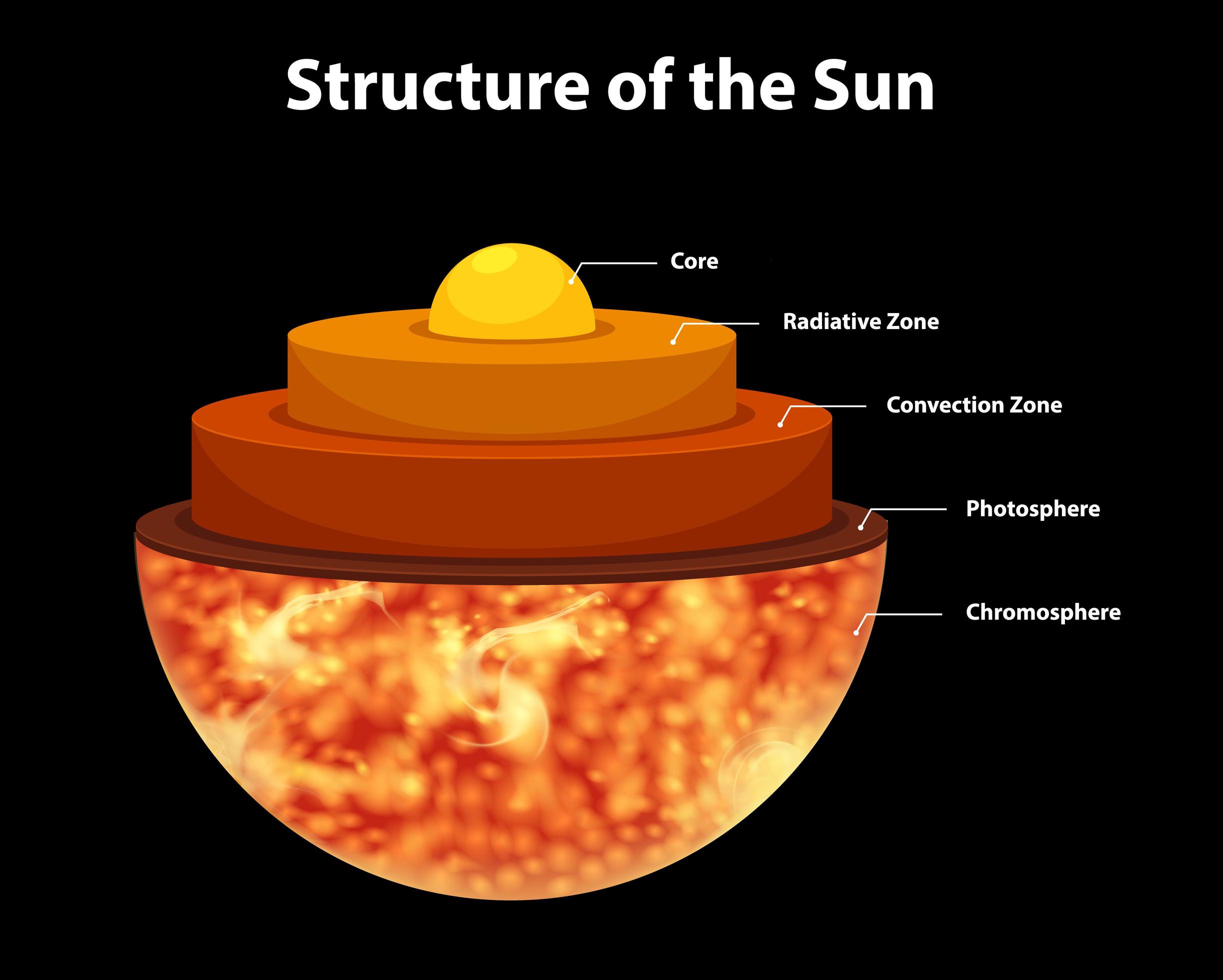
Diagram showing structure of the sun 1142243 Vector Art at Vecteezy
An H-R diagram takes a set of stars and plots their luminosities (relative to the Sun) versus their surface temperatures. Note that the temperature scale on the H-R diagram in Figure 1 runs backwards, right to left, and that the luminosity axis is highly compressed. (Historically, this was how the first H-R diagram was constructed, so now they.

What Are The Layers Of The Sun? WorldAtlas
The claim: The sun and the moon are the same size and the same distance from Earth. A Dec. 28, 2023, Facebook post (direct link, archive link) claims humanity's basic understanding of the solar.

Anatomy Of The Sun KES Science Wiki
Layers of the Sun The sun has seven different layers, which are further divided into three inner and four outer layers. The names of these layers, in order of their presence from the core of the sun are as follows: Inner Layers 1) Core 2) Radiative Zone 3) Convection Zone Outer Layers 1) Photosphere 2) Chromosphere 3) Transition Region 4) Corona
